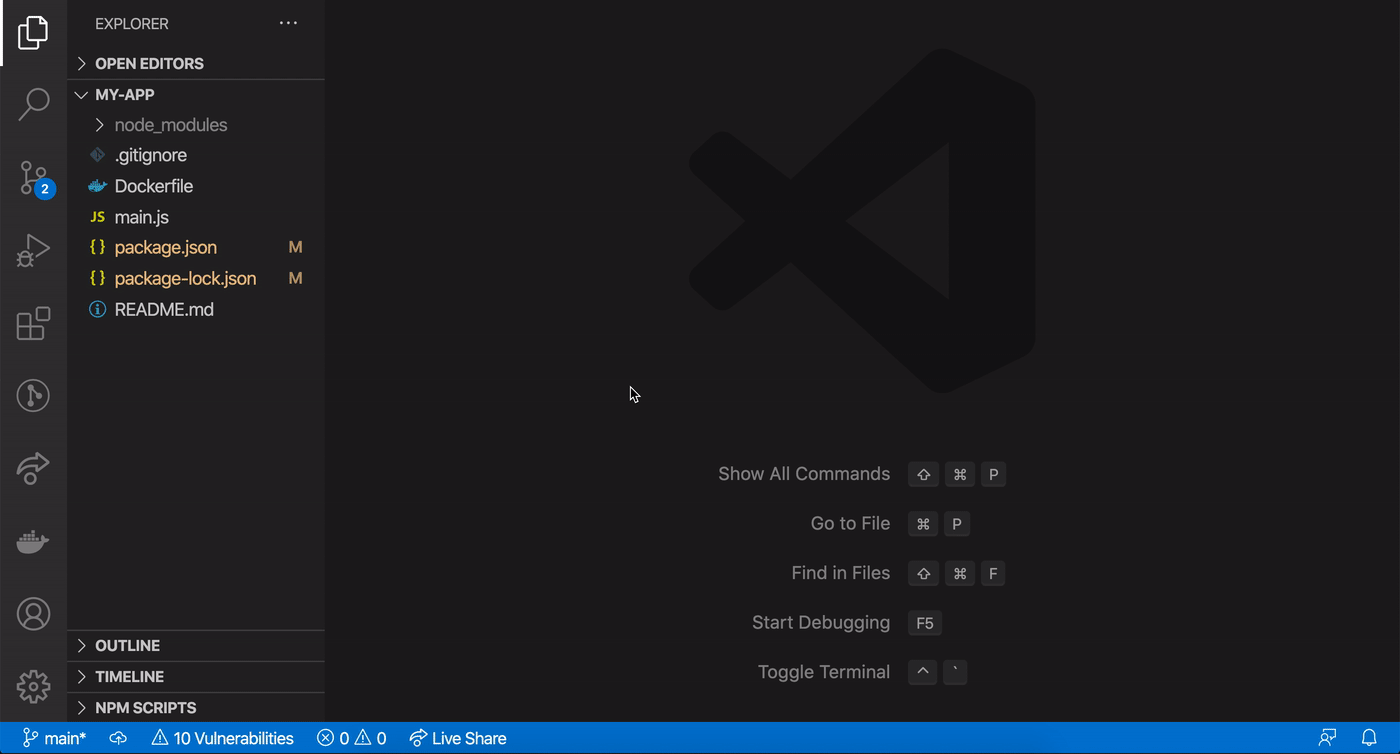

- #Visual studio for mac npm install
- #Visual studio for mac npm update
- #Visual studio for mac npm code
- #Visual studio for mac npm download
Note: The leading slash \ is required to prevent $PATH from expanding during the concatenation.
#Visual studio for mac npm code
To do so run the following commands: cat > ~/.bash_profile # Add Visual Studio Code (code) export PATH="\$PATH:/Applications/Visual Studio Code.app/Contents/Resources/app/bin" EOF Instead of running the command above, you can manually add VS Code to your path,
#Visual studio for mac npm install
bash_profile (or equivalent) from an early VS Code version, remove it and replace it by executing the Shell Command: Install 'code' command in PATH command. Note: If you still have the old code alias in your. ' in any folder to start editing files in that folder.
#Visual studio for mac npm download
Open the browser's download list and locate the downloaded archive.Configure IntelliSense for cross-compilingĮdit Visual Studio Code on macOS Installation.Note: This option will disable only the analytics for the Visual Studio Code extension.
#Visual studio for mac npm update

Npm run test-mac # run tests on ios device Npm run launch-as-server # launches the debug adapter in server mode To test the extension run the following commands in the root repository folder: npm install Npm run package # produces nativescript-*.*.*.vsix in the root folder Npm run build # compiles TypeScript source files to JavaScript Get the latest bitsĬlone the extension repository: git clone build the extension run the following commands in the root repository folder: npm install If your version of NativeScript is incompatible with the extension you will see a warning the first time you run a command. You can run your app both on iOS and Android. The Run command triggers tns run on emulator or device. There's only a couple of them but the list will grow in the future. Type NativeScript in the Command Palette and you will see all available commands. More information on what you can do with the Visual Studio Code Debugger you can find here. If you want to attach to already running NativeScript application, use one of the attach configurations. Your application will be launched and the VSCode debugger will attach.

To start the application with attached debugger, choose one of the launch configurations from the drop-down list and then click the start button. Open the Debug Panel, click the gear iconĪnd choose NativeScript debug environment. Setup the extensionĬreate NativeScript application by running tns create MyApp and open MyApp folder in Visual Studio Code. To check which is your default node version execute 'nvm ls' on the command prompt and you should see something like 'default -> 5.5.0 (-> v5.5.0)' in the output. If you are using nvm to manage your node versions, make sure that nativescript is installed in your default nodeJS version. Note: The VS Code extension requires nativescript node module to be globally installed. To install NativeScript and all its dependencies, follow the instructions in our getting started guide.
The NativeScript extension for Visual Studio Code aids your NativeScript project development within Visual Studio Code. NativeScript Extension for Visual Studio Code Introduction


 0 kommentar(er)
0 kommentar(er)
